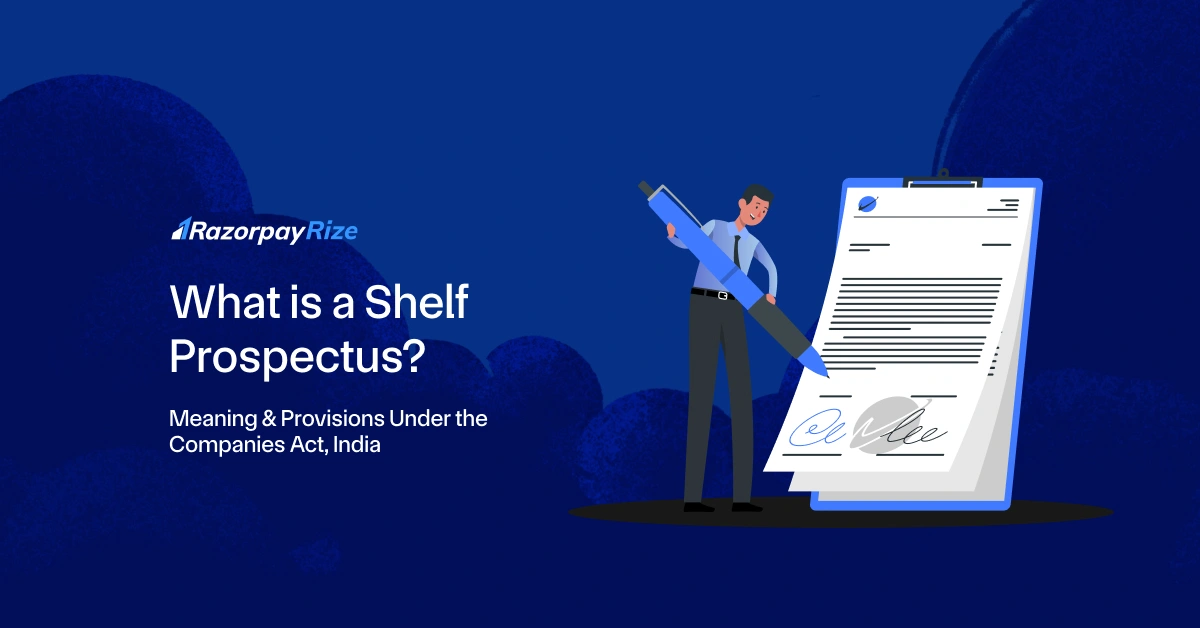For solo entrepreneurs looking to start their own venture, a One Person Company (OPC) is an ideal business structure that offers the benefits of limited liability and complete control over the business. Understanding OPC benefits and the costs associated with registration is essential before diving into the process.
From government fees to professional charges, registering an OPC in India involves several expenses. Planning your budget can help you navigate the process smoothly and avoid unexpected costs.
In this blog, we’ll explore the various costs associated with OPC registration online in India and provide a detailed breakdown.
Table of Contents
What Does the OPC Registration Fee Include?
The OPC registration fee breakdown generally comprises the following components:
- Government Filing Fees: Charges for submitting incorporation forms and other mandatory filings.
- Professional Service Charges: Fees for hiring professionals like Chartered Accountants or Company Secretaries assist with registration.
- Miscellaneous Costs: Additional expenses such as document preparation, notarisation, and obtaining licenses, if required.
OPC Registration Fees Breakdown
The OPC registration cost can be divided into several components:
Government Fees
- Cost for filing the SPICe+ form and other mandatory forms on the MCA portal.
- Cost of obtaining DSC for the Director.
- Fees for obtaining the DIN
- Depends on the authorised capital of the company; higher authorised capital attracts higher fees.
Professional Service Charges
Fees for professional assistance in preparing documents, filing forms, and ensuring compliance. It varies based on the service provider and location.
Stamp Duty Fees
Stamp duty is state-specific and varies based on the authorised capital and the location of its registered office. On average, stamp duty can range from ₹500 to ₹5,000.
Name Reservation Fees
Reserving a unique name for your OPC costs ₹1000 per application. This step ensures your chosen name complies with MCA guidelines.
{{company-reg-cta}}
Miscellaneous Expenses
Charges for notarisation and other incidental expenses.
How Much Does OPC Registration Cost?
The overall cost of OPC registration in India typically ranges between INR 5,000 and INR 20,000, depending on various factors like professional service fees, authorised capital, and location. Government fees generally constitute a significant portion of the total cost.
Factors Affecting OPC Registration Fees
There are several factors affecting the OPC fees. Some of the OPC registration cost factors include-
- Authorised Capital: Higher authorised capital increases government fees and stamp duty charges.
- Location: Costs may vary depending on the state due to differences in stamp duty and professional service charges.
- Choice of Service Provider: The fees charged by professionals or agencies can differ significantly based on their expertise and service offerings.
- Additional Services: Costs for optional services, such as trademark registration or GST registration, add to the total expense.
{{opc-cta}}
<H2> One Person Company Registration Process
The OPC registration process involves the following key steps:
- Name Approval:
- Choose a unique name for your OPC and apply for approval through the Ministry of Corporate Affairs (MCA) portal.
- Obtaining DSC:
- Obtain a Digital Signature Certificate (DSC) for the proposed director.
- Drafting Memorandum and Articles of Association:
- Prepare the Memorandum of Association (MOA) and Articles of Association (AOA) outlining the company's objectives and rules.
- Submitting Documents on the MCA Portal:
- Upload the required documents, such as identity proof, address proof, and the nominee's consent, on the MCA portal along with Form SPICe+.
- Incorporation Certificate:
- Once approved, the MCA issues a Certificate of Incorporation, marking the completion of the registration process.
Frequently Asked Questions
Private Limited Company
(Pvt. Ltd.)
- Service-based businesses
- Businesses looking to issue shares
- Businesses seeking investment through equity-based funding
Limited Liability Partnership
(LLP)
- Professional services
- Firms seeking any capital contribution from Partners
- Firms sharing resources with limited liability
One Person Company
(OPC)
- Freelancers, Small-scale businesses
- Businesses looking for minimal compliance
- Businesses looking for single-ownership
Private Limited Company
(Pvt. Ltd.)
- Service-based businesses
- Businesses looking to issue shares
- Businesses seeking investment through equity-based funding
One Person Company
(OPC)
- Freelancers, Small-scale businesses
- Businesses looking for minimal compliance
- Businesses looking for single-ownership
Private Limited Company
(Pvt. Ltd.)
- Service-based businesses
- Businesses looking to issue shares
- Businesses seeking investment through equity-based funding
Limited Liability Partnership
(LLP)
- Professional services
- Firms seeking any capital contribution from Partners
- Firms sharing resources with limited liability
Frequently Asked Questions
Who is eligible to act as a member of an OPC?
To be a member of a One Person Company (OPC), you must meet the following eligibility criteria:
- Individual Membership: Only a natural person (not a company or organisation) can act as a member of an OPC.
- Residency Requirement: The person must be a resident of India, meaning they have stayed there for at least 120 days during the financial year.
Citizenship: Only Indian citizens are eligible to form an OPC.
Is GST registration mandatory for an OPC?
GST registration is not mandatory for every OPC. The requirement depends on the nature of the business and its turnover:
- Mandatory Registration: If the annual turnover exceeds ₹20 lakh (₹10 lakh for certain northeastern states) or if the business involves inter-state supply of goods or services.
- Voluntary Registration: Even if the turnover is below the threshold, an OPC may opt for voluntary registration to claim input tax credit and expand its business operations.
What is the cost of registering an OPC?
The OPC registration charges in India can vary based on professional fees, state-specific charges, and other factors.
What is the minimum capital for an OPC company?
There is no mandatory minimum capital requirement for registering an OPC in India. However, the capital structure must be defined at the time of incorporation, and it can be as low as ₹1. The recommended authorised capital typically starts at ₹1 lakh, but this is not a compulsory requirement and depends on the founder’s business plan.
What is the turnover limit for an OPC?
An OPC can operate as long as its annual turnover does not exceed ₹2 crore and its paid-up capital does not exceed ₹50 lakh. If the turnover crosses ₹2 crore, the OPC must convert into a private limited company or a public limited company within six months of exceeding the limit.
What are the tax implications of a One Person Company?
The applicable Tax rate to the OPC would be 30% plus cess and surcharge.
Can an OPC raise funds from the public?
No, an OPC cannot raise funds from the public. Since it is a privately held entity, it is restricted from:
- Issuing shares to the public.
- Listing on a stock exchange.
However, OPCs can raise funds through other methods, such as loans from banks or financial institutions or by adding a new shareholder when converting to a private limited company.

















